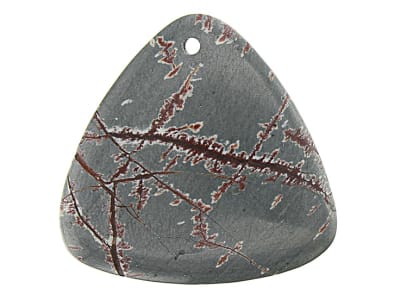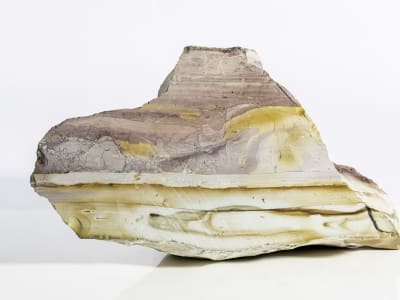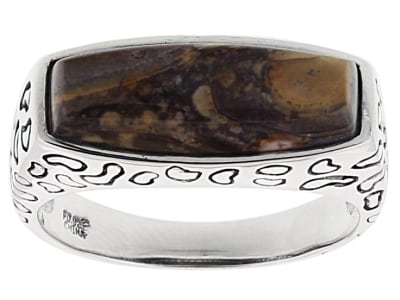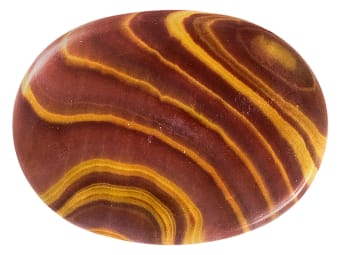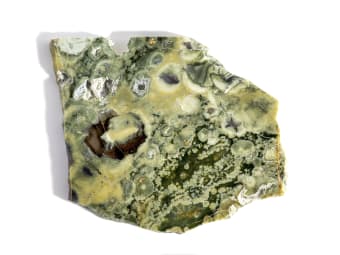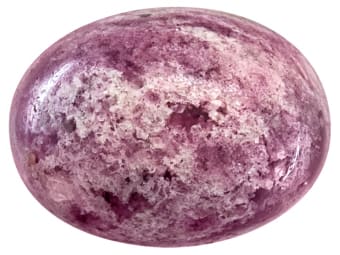Rhyolite is a volcanic rock similar in its chemistry to granite. Most rhyolites are porphyritic, with larger crystals in a fine-grained matrix of crystals too small to be seen with the naked eye. Rhyolite is silica-rich, giving it a light range of color, often found with banding throughout. This beautiful stone is often used in ornamentation.
General Information
Rhyolite Colors
-
 Bi-color
Bi-color -
 Brown
Brown -
 Gray
Gray -
 Green
Green -
 Multi-color
Multi-color -
 Orange
Orange -
 Red
Red
Alternate Names
Hickoryite, Rainbow Hickoryite, Spiderweb Rhyolite, Birds Eye Rhyolite, Mushroom Rhyolite, Wonderstone
Countries of Origin
Tanzania, United Republic Of; Unknown; United States of America; Brazil; Mexico; South Africa; Australia
Care
Normal care
Species/Variety
Birdseye Rhyolite
Birdseye rhyolite is found from the Casas Grandes Municipality, Chihuahua, Mexico. It is a spherulitic rhyolite that comes in shades of brown, cream, red, pink, and gray.
Hickoryite
Hickoryite is a banded variety of Rhyolite the comes from Rodeo, State of Durango, Mexico.
Wonderstone
Wonderstone is a banded variety of Rhyolite that comes from Wonderstone Mountain, Churchill Co., Nevada, USA. Wonderstone is off white to cream, gray, maroon, and yellow-brown and is colored by iron oxide.
Rainforest Jasper or Spherulitic Rhyolite
Rainforest jasper is a variety of rhyolite lava found in Mt Hay, in Central Queensland, Australia. It formed about 120 million years ago. It is green or brownish in color with red and cream zones. It is also called spherulitic rhyolite. When the lava cooled gas bubbles became trapped in the material. Later agate, quartz or opal filled the voids.
Apache Sage
Apache Sage is a rhyolite variety from New Mexico. It is typically to be red, pink or cream with dendrites and layers that look like landscapes.
Inclusions
Bixbite In Rhyolite
As many gem collectors know, bixbite, or red beryl, is one of the rarest gems on the planet. With few faceted gems trickling from its single source in the Wah Wah Mountains of Utah, USA, bixbite in rhyolite is a much more obtainable form of this beautiful gem. While there is precious crystalline bixbite present throughout the rhyolite matrix, cutting to retrieve only bixbite would yield extremely small stones, with much of this vibrant gem going to waste. Leaving bixbite in the rhyolite matrix preserves so much more of the material and provides a pleasing contrast of colors, portraying precisely how these two materials united in nature millions of years ago.
